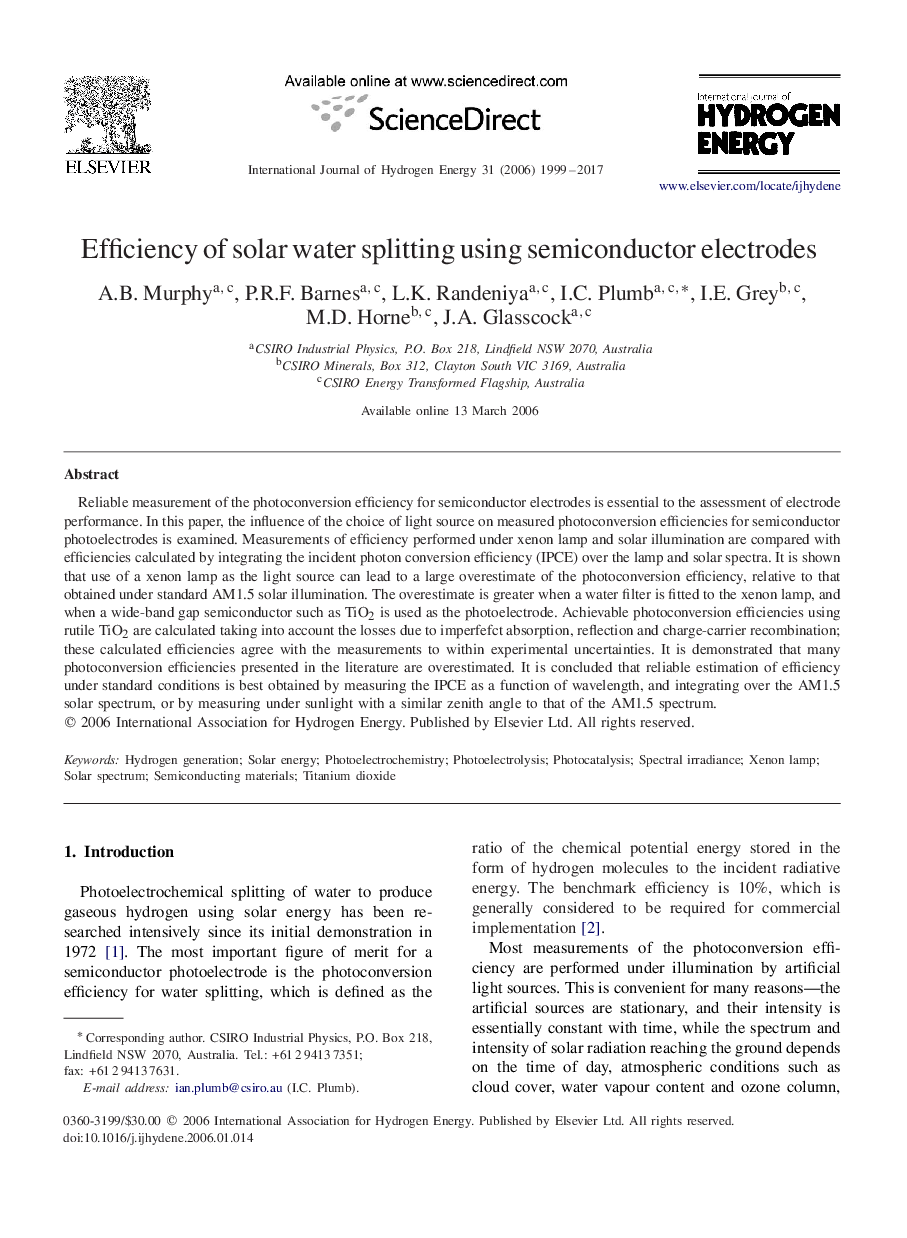| Article ID | Journal | Published Year | Pages | File Type |
|---|---|---|---|---|
| 1280940 | International Journal of Hydrogen Energy | 2017 | 19 Pages |
Reliable measurement of the photoconversion efficiency for semiconductor electrodes is essential to the assessment of electrode performance. In this paper, the influence of the choice of light source on measured photoconversion efficiencies for semiconductor photoelectrodes is examined. Measurements of efficiency performed under xenon lamp and solar illumination are compared with efficiencies calculated by integrating the incident photon conversion efficiency (IPCE) over the lamp and solar spectra. It is shown that use of a xenon lamp as the light source can lead to a large overestimate of the photoconversion efficiency, relative to that obtained under standard AM1.5 solar illumination. The overestimate is greater when a water filter is fitted to the xenon lamp, and when a wide-band gap semiconductor such as TiO2 is used as the photoelectrode. Achievable photoconversion efficiencies using rutile TiO2 are calculated taking into account the losses due to imperfect absorption, reflection and charge-carrier recombination; these calculated efficiencies agree with the measurements to within experimental uncertainties. It is demonstrated that many photoconversion efficiencies presented in the literature are overestimated. It is concluded that reliable estimation of efficiency under standard conditions is best obtained by measuring the IPCE as a function of wavelength, and integrating over the AM1.5 solar spectrum, or by measuring under sunlight with a similar zenith angle to that of the AM1.5 spectrum.
